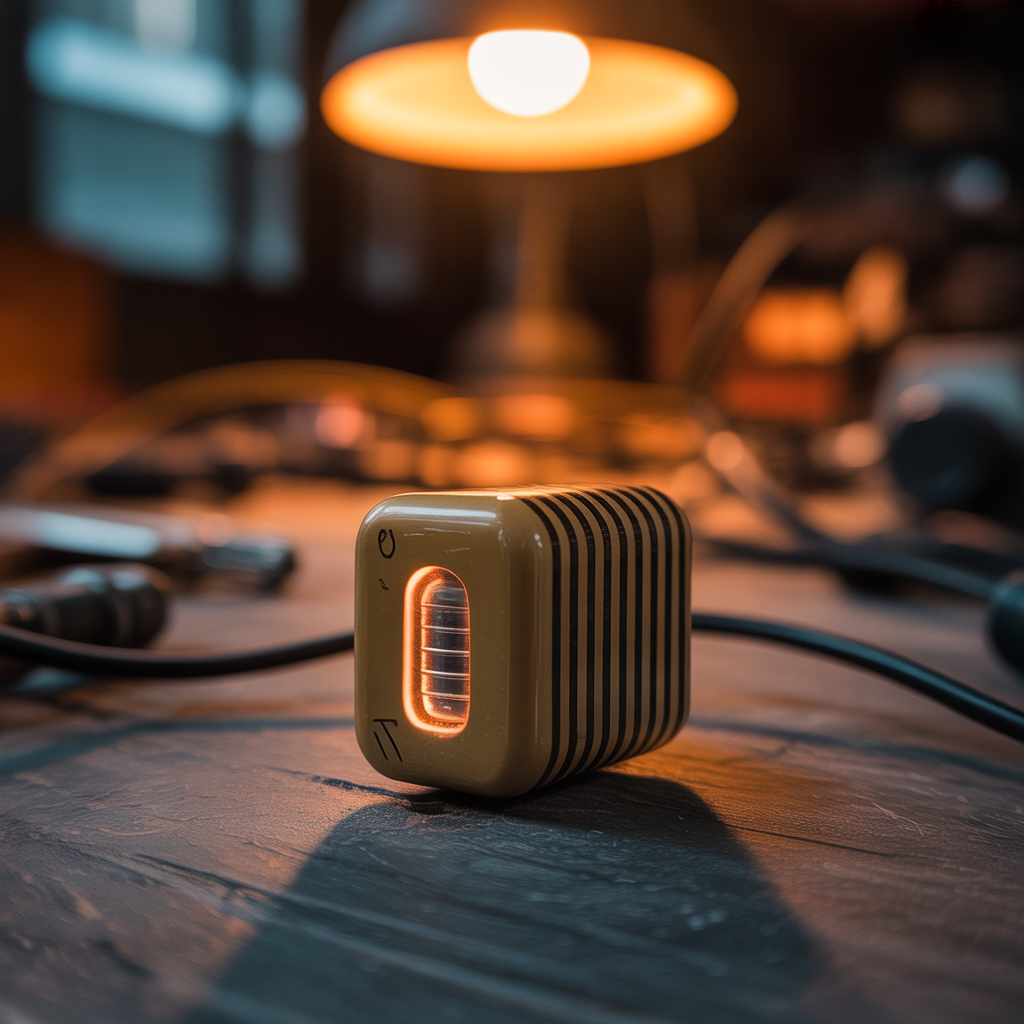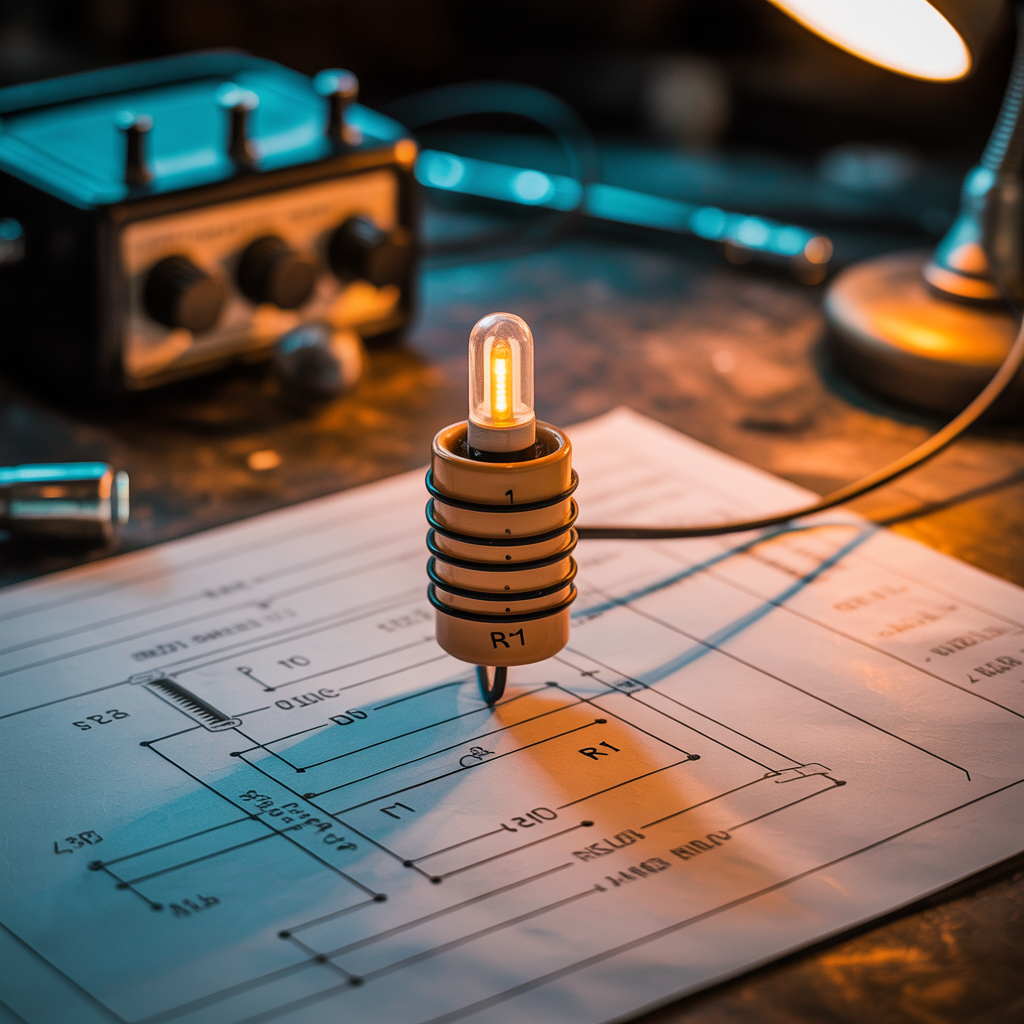Dimming An LED: What Electronics Component Would Fade an LED Light Bulb?
Have you ever noticed your LED light bulb slowly dimming over time, even though it still seems to be working? Understanding what electronics component would fade an LED light bulb is crucial for both troubleshooting and understanding the lifespan of your lighting. This in-depth guide will explore the various components within an LED circuit and…
Have you ever noticed your LED light bulb slowly dimming over time, even though it still seems to be working? Understanding what electronics component would fade an LED light bulb is crucial for both troubleshooting and understanding the lifespan of your lighting. This in-depth guide will explore the various components within an LED circuit and how their degradation can lead to a decrease in light output. We’ll delve into the intricacies of LEDs, drivers, capacitors, and resistors, explaining their functions and how their malfunctions contribute to dimming. We’ll also discuss troubleshooting techniques and preventative measures.
A resistor is the key electronic component used to fade an LED light bulb. By increasing resistance, it limits current, dimming the LED. For adjustable fading, a potentiometer or a pulse-width modulation (PWM) controller is often used to smoothly control brightness.
Light Emitting Diodes (LEDs) are semiconductor devices that convert electrical energy into light. Unlike incandescent bulbs that produce light through heat, LEDs create light through electroluminescence, a process where electrons recombine with holes in a semiconductor material, releasing photons (light particles). This process is significantly more energy-efficient.
What Electronics Component Would Fade an LED Light Bulb?
Internal Components of an LED Bulb

A typical LED bulb isn’t just a single LED; it contains several components working together: LEDs themselves (often multiple for higher brightness), a driver circuit (to regulate power), capacitors (for smoothing power fluctuations), and resistors (to limit current). The interaction of these components determines the bulb’s brightness and longevity.
Read More: 12 Creative Hallway Ceiling Light Ideas & Hacks
The Role of the LED Driver
The Driver’s Function
The LED driver is the brain of the operation. Its primary role is to convert the AC power from your home’s electrical supply into the DC power that LEDs require. It also protects the LEDs from overvoltage and overcurrent, preventing damage. A malfunctioning driver is a frequent cause of dimming.
Types of LED Drivers
There are various types of LED drivers, including constant current drivers (most common for LEDs), and constant voltage drivers. Each type has its advantages and disadvantages in terms of efficiency and cost. The specific driver used significantly impacts the bulb’s performance and lifespan.
Capacitors: Smoothing the Power Supply

Capacitor Function in LED Circuits
Capacitors act as energy storage units within the circuit. They smooth out any fluctuations in the DC power supplied by the driver. This prevents flickering and helps maintain a consistent light output. Deterioration of these capacitors can lead to uneven illumination and dimming.
Read More: Should LED Lights Be Grounded? Real Life Answer
Types of Capacitors Used in LED Bulbs
Different types of capacitors are used, each with its own characteristics and tolerance to voltage and temperature. Electrolytic capacitors are common but have limited lifespans. Their degradation is a significant contributor to LED dimming.
Resistors: Controlling the Current
Resistor Function and Importance
Resistors limit the flow of current through the LEDs. This is crucial because LEDs are sensitive to overcurrent, which can quickly damage them. A resistor that’s too low in value might lead to excessive current, damaging the LEDs and causing dimming or failure.
Impact of Resistor Failure
If a resistor fails (e.g., becomes open-circuited), it could prevent current from reaching the LEDs, resulting in no light at all. However, a partially failed resistor might cause uneven current distribution among the LEDs, leading to a gradual dimming of the light bulb.
The Impact of Heat on LED Components
Heat and LED Degradation
Heat is a major enemy of LEDs and their associated components. Excessive heat accelerates degradation, reducing the lifespan and efficiency of the LEDs and other electronic components within the light bulb. This heat can cause the light to dim or even fail prematurely.
Heat Sink Design and Efficiency
Effective heat dissipation is critical for the long-term performance of LED bulbs. A good heat sink (a part designed to draw heat away from the LEDs) significantly extends their life and helps prevent dimming due to heat-induced degradation.
Troubleshooting Dimming LED Bulbs
Visual Inspection
Start by carefully inspecting the bulb for any visible damage, such as cracks or burn marks. Look closely at the LEDs themselves to see if any appear significantly darker or not illuminated.
Testing the Components
If a visual inspection yields nothing, you can use a multimeter to test the voltage and current at various points in the circuit. This requires some basic electronics knowledge. You might need to carefully disassemble the bulb (exercise caution as it might contain small parts).
Replacing Faulty Components
If you identify a faulty component (driver, capacitor, resistor), replacing it might restore the bulb’s brightness. However, this requires soldering skills and caution due to potential electric shock.
Preventing LED Dimming
Choosing High-Quality Bulbs
Investing in high-quality LED bulbs from reputable brands can greatly increase their lifespan and reduce the likelihood of premature dimming. Look for bulbs with good heat dissipation designs and reliable drivers.
Proper Installation
Ensure the bulb is properly installed in the fixture to facilitate good heat dissipation. A poorly fitted bulb might not allow adequate airflow, leading to overheating and dimming.
Environmental Factors
Avoid using LED bulbs in environments with extreme temperatures or high humidity, as these can also contribute to premature failure and dimming. The bulbs should not be subjected to high shock or vibration.
Comparing LED Bulbs and Other Lighting Technologies
LEDs vs. Incandescent Bulbs
LEDs are far more energy-efficient and have significantly longer lifespans compared to traditional incandescent bulbs. However, the initial cost of LEDs is typically higher.
LEDs vs. Fluorescent Bulbs
LEDs often outshine fluorescent bulbs in terms of energy efficiency and lifespan. They also don’t contain mercury, a hazardous material found in fluorescent bulbs.
Frequently Asked Questions
What is the most common cause of LED bulb dimming?
The most common cause is the degradation of the LED driver circuit or the electrolytic capacitors within the bulb. Over time, these components can fail due to heat, voltage fluctuations, or aging. This often results in a gradual decrease in light output.
Can I repair a dimming LED bulb?
Sometimes, depending on the cause and your technical skill, you might be able to repair a dimming LED bulb. If a specific component like a capacitor or resistor has failed, replacing it is possible with soldering skills. However, repairing the integrated driver circuit is far more challenging.
How long do LED bulbs typically last?
High-quality LED bulbs are designed to last for many years (15-25 years under normal operating conditions), far longer than incandescent or fluorescent bulbs. However, environmental factors and usage intensity can influence lifespan.
Why does my LED bulb flicker?
Flickering might indicate a problem with the power supply or a faulty driver circuit. Loose wiring or a poor connection can also cause flickering. In some cases, it might be due to compatibility issues with the specific dimmer switch used in conjunction with the LED bulb.
Are all LED bulbs created equal?
No. The quality of components, especially the driver and heat dissipation design, drastically affects the lifespan and performance of LED bulbs. Reputable brands generally offer better quality and longer-lasting bulbs.
Final Thoughts
Understanding the various components within an LED light bulb and how they contribute to its functionality helps in troubleshooting dimming issues. While repairing a dimming bulb may be possible for those with electronics expertise, preventing dimming is easier and more cost-effective. Choosing high-quality bulbs, ensuring proper installation, and avoiding extreme environmental conditions can significantly extend the life of your LED lighting. By understanding the underlying technology, you can make informed decisions about lighting choices, saving energy and money in the long run. Don’t hesitate to consult professionals if you are uncertain about repairing your bulb; sometimes, replacement is the simplest and safest solution.

